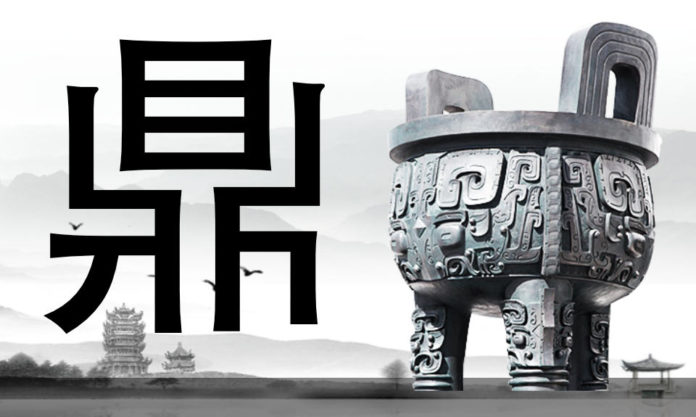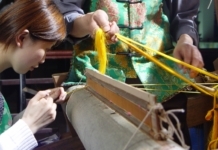As opposed to the Latin alphabet that gives us words which sound like their meaning, the Chinese words of long ago often look like their meaning. Just like the ancients, these characters work from dawn to dusk, perhaps leaning against some wooded structure to rest, as in the word “休”.
The most primitive forms of Chinese characters are found in the oracle-bone inscriptions of 3-4,000 years ago. These hieroglyphs have meaning beyond structure, so that the whole looks both unique and connotative.
Chinese characters derive beauty from form. With the original character an ideographic hieroglyph, there is connection between the glyph, the meaning and the sound of the character.
From those beginnings in oracle-bone inscriptions to modern Chinese, despite evolution in form, pronunciation and meaning, there has been almost no fundamental change in the nature of these pictorial characters.
Although the oracle bone’s glyph structure is somewhat unstable, there is conformity to the six rules of Chinese character classification (六书). The rules comprise pictographs (象形), ideographs (指事), determinative phonetics (形声), combined ideographs (会意), the mutually explanatory (转注) and phonetic loans (假借).
From the changes observed in commonly used oracle-bone inscriptions, we can understand the development of many Chinese characters. For example, through simplification, the number of strokes in the complex characters of the original oracle bone are gradually reduced.
Among the pictographs, some are not directly used to indicate specific objects, but instead to indicate concepts related to objects. For example: The word “大” (big) was originally shaped like a person standing upright, with their hands spread wide (think, “The fish I caught was THIS big”).
Other good examples of pictographs include “月” (moon), resembling a crescent moon; “龟”, resembling a turtle on its side; “鱼”, a fish swimming upward; the well-known “门” that is a door; and “日” (sun) that is a circle with a point in the middle, much like the shape we see when we look directly at the sun.
Since pictographs are the earliest forms of writing, so too their numbers are limited; it being impossible to create a pictograph according to the characteristics of every last thing. Hence the method of inventing characters according to their meaning (指事法).
Herein, a symbol is added to to a figure to express meaning. For example, the word “刃” (blade edge) comes about by adding a point to the knife (刀). However, a little more imagination is required to interpret “凶” (terrible/ominous), whereby the addition of the cross rendering a trap-type symbol.
So while English and other Latin-based languages dish up onomatopoeia as linguistic creativity, Chinese characters on the other hand, provide for beauty beyond compare.












